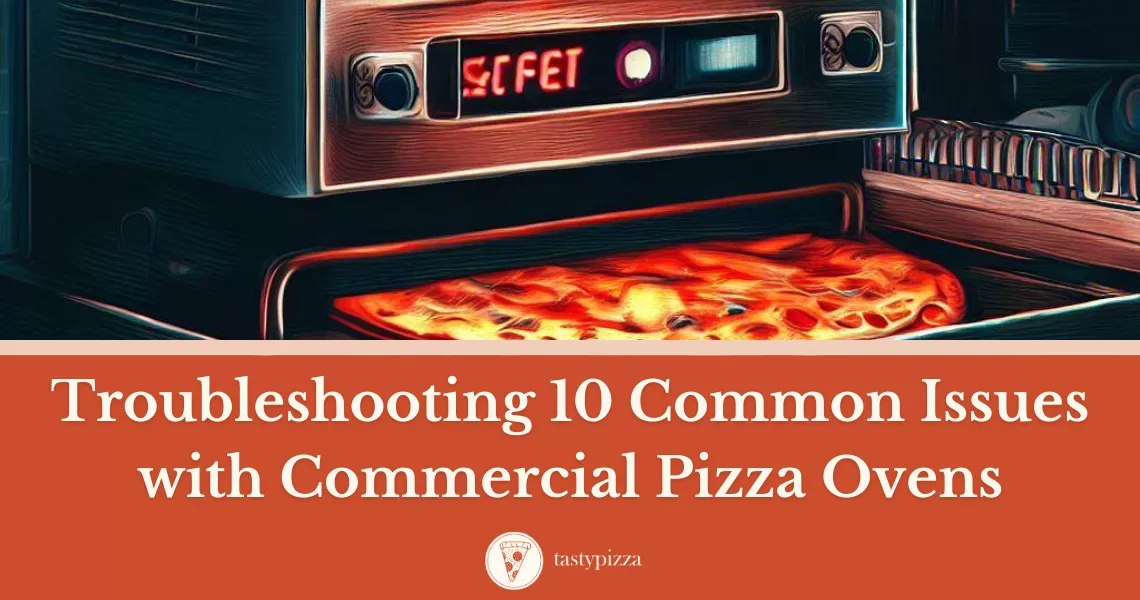Ever had a rush of customers at your food truck, only to find your pizza oven acting up?
You’re not alone.
Commercial pizza ovens, while powerful, can sometimes be a bit finicky – especially if they’re gas, wood, or electric-powered.
How can a small business owner or food truck operator quickly troubleshoot these common issues without losing precious business time?
In this guide, we’ll walk through 10 common problems associated with commercial pizza ovens and how to address them, so you can keep the pizzas coming and your customers happy.
Table of Contents
Toggle1. Understanding Your Oven Type
Gas Oven
Basics of how it works: A gas-powered oven utilizes natural gas or propane to generate heat. The gas burner is responsible for igniting a flame that heats the oven’s interior.
Key components to monitor: Keep an eye on the gas supply, burners, and thermostat to ensure proper operation.
Wood Oven
Basics of how it works: Wood ovens rely on burning wood to produce heat. The fire’s radiant heat is absorbed by the oven’s walls and floor, cooking the pizzas.
The importance of wood choice and storage: The type of wood you use greatly affects the flavor of your pizzas. Properly seasoned hardwoods are ideal for consistent and flavorful results.
Electric Oven
Basics of how it works: Electric ovens use heating elements to generate heat. These elements become red-hot, transferring heat to the oven’s interior.
Safety measures to keep in mind: Always ensure that your oven is properly grounded and that the electrical components are in good condition.
READ ALSO: Our top pizza oven picks for commercial use.
2. Issue: Inconsistent Oven Temperature

Common causes: Several factors can lead to temperature inconsistencies, including improper airflow, thermostat malfunctions, or gas flow issues.
Thermostat malfunctions: A faulty thermostat can cause the oven temperature to fluctuate. Regular calibration is essential.
Gas flow issues: If you’re using a gas oven, a disruption in gas flow can lead to temperature irregularities. Check the gas supply and ensure proper ventilation.
Electric circuit problems: In electric ovens, issues with heating elements or circuits can cause temperature fluctuations. Check for damaged components.
Solutions and quick fixes: Regularly clean the oven’s interior to ensure proper airflow. Calibrate the thermostat according to the manufacturer’s instructions. For gas ovens, ensure proper gas supply and ventilation.
3. Issue: Oven Not Heating At All

Diagnosing the root cause: If your oven isn’t heating, start by checking the power source and connections.
Power source issues: Ensure that the oven is properly connected to a power source and that the power cord is undamaged.
Ignition troubles (for gas ovens): In gas ovens, ignition problems can prevent the oven from heating. Check the igniter and thermocouple for issues.
Recommended solutions: If it’s a power source issue, check the circuit breaker or replace a blown fuse. For gas ovens, ensure the pilot light or igniter is functioning properly.
DON’T MISS: Our recent review of the VEVOR Double Deck Pizza Oven.
4. Issue: Overcooking or Undercooking Pizzas

Identifying the problem: Inconsistent cooking results can be frustrating. Factors like uneven heat distribution and thermostat inaccuracies contribute to this issue.
Uneven heat distribution: Poorly positioned pizzas or blocked vents can lead to uneven cooking. Ensure proper placement and adequate airflow.
Thermostat inaccuracies: If your thermostat is inaccurate, it can cause overcooking or undercooking. Regular calibration is crucial.
Addressing and resolving the issue: Rotate pizzas during cooking to ensure even exposure to heat. Calibrate the thermostat and consider using an oven thermometer for accuracy.
5. Issue: Strong Soot Formation in Wood Ovens

Why it happens: Soot formation is a result of incomplete combustion. This can occur due to factors like wet wood usage or poor airflow.
Wet wood usage: Wet or unseasoned wood produces excess smoke and soot. Always use dry, seasoned wood for optimal combustion.
Poor airflow: Inadequate ventilation can lead to incomplete combustion, causing soot buildup. Keep the oven’s vent and chimney clean and clear.
Tips to minimize and clean soot: Use dry wood and ensure proper ventilation. Regularly clean the oven’s interior and chimney to prevent soot buildup.
6. Issue: Electric Oven Tripping the Circuit Breaker
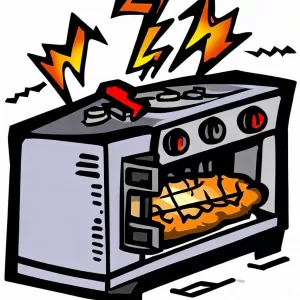
Possible reasons: An overloaded circuit or faulty wiring can cause the circuit breaker to trip.
Overloading the circuit: Using multiple high-power appliances simultaneously can overload the circuit. Avoid running too many devices at once.
Faulty wiring or components: Damaged wiring or malfunctioning components can also trigger circuit breaker trips. Inspect and repair or replace damaged parts.
Solutions to prevent this: Distribute your electrical load evenly across circuits. If the issue persists, consult an electrician to assess and repair the wiring.
7. Issue: Oven Door Not Sealing Properly
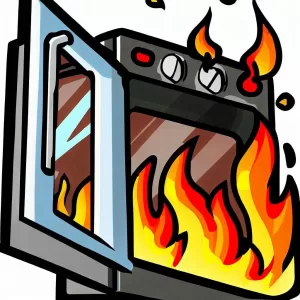
How this impacts cooking: An improperly sealed oven door can lead to heat loss and uneven cooking.
Steps to diagnose and fix the seal: Check the door gasket for wear or damage. Replace the gasket if necessary. Ensure the hinges and springs are in good condition for a proper seal.
8. Issue: Gas Oven Producing Yellow Flames
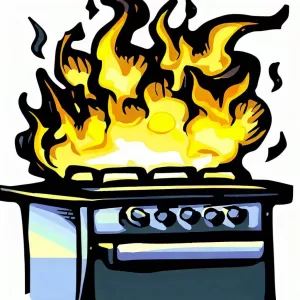
Why it’s a cause for concern: Yellow flames indicate incomplete combustion, which can produce carbon monoxide and affect food quality.
Incomplete combustion: A balanced gas-to-air ratio is essential for blue flames. Yellow flames suggest an improper mixture.
Carbon monoxide risks: Yellow flames produce carbon monoxide, a dangerous gas. Proper combustion prevents its formation.
Solutions to achieve blue flames: Ensure proper gas pressure and ventilation. If the issue persists, consult a professional technician to inspect and adjust the gas mixture.
9. Issue: Smoke or Unusual Smells from Electric Ovens
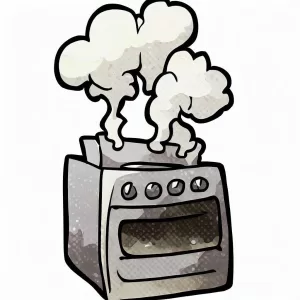
Identifying the root cause: Burning food debris or electrical malfunctions can cause smoke or strange odors.
Food debris burning: Accumulated food particles can burn and produce smoke. Regularly clean the oven’s interior to prevent this.
Electrical malfunctions: Damaged heating elements or wiring can emit unusual smells. Inspect and repair damaged components.
Safety measures and solutions: Clean the oven regularly and ensure proper ventilation. If unusual smells persist, consult a professional technician.
10. Issue: Difficulty in Controlling the Flame in Wood Ovens
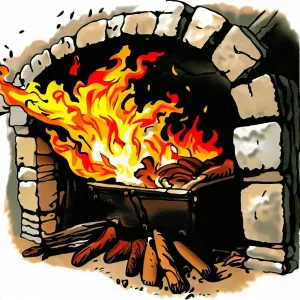
Common mistakes leading to this issue: Poor flame control can result from improper wood stacking or mismanaging oxygen supply.
Improper wood stacking: Incorrect wood placement can lead to uneven burning and flame control. Stack wood strategically for efficient combustion.
Not managing oxygen supply: Oxygen is essential for combustion control. Adjust the oven’s air intake to regulate the flame.
Effective flame management techniques: Learn to balance oxygen intake and wood placement. Practice and experimentation will help you achieve optimal flame control.
Final Thoughts
Understanding your oven type and addressing specific issues can ensure smoother pizza production.
Regular maintenance and understanding the unique needs of your oven type can save you time and money in the long run.
Always prioritize safety and consider seeking professional help if unsure about a particular issue.
If you need a new oven then check out our recent in-depth review of the VEVOR Double Deck Pizza Oven it does good job baking pizzas.
Sources:
Frequently Asked Questions
Regular cleaning is essential. Ideally, perform a thorough cleaning after every use and a deep cleaning at least once a month.
While the basics of troubleshooting apply to both branded and generic ovens, branded ovens might have specific features that require specialized attention. Refer to the manufacturer’s guidelines.
Generally, a temperature range of 700°F to 800°F (370°C to 425°C) is suitable for commercial pizza ovens. However, follow your recipe and adjust accordingly.
If your oven consistently fails to function properly despite proper maintenance and repairs, and the cost
While many reputable brands produce reliable commercial pizza ovens, it’s essential to research and read customer reviews to find a model that suits your needs and has a history of fewer issues. One of them is the Bakers Pride Oven

Ethan Davis, a culinary arts graduate with a deep passion for pizza, is an esteemed author in the field. With a wealth of professional experience in diverse pizza restaurants, Ethan has honed his skills and expertise in the art of pizza making. His mission is to share his extensive knowledge with a wider audience, captivating them through engaging articles that showcase his profound understanding and unwavering enthusiasm for the subject. Through his writing, Ethan aims to inspire pizza enthusiasts worldwide, fostering a greater appreciation for the craft and encouraging others to explore the delicious world of pizza.

